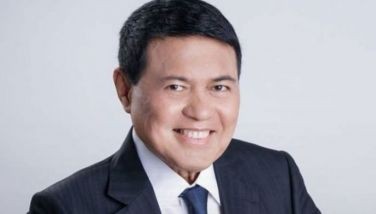Attracting investments
Pinnacle Real Estate Consulting Services has just released its latest research on foreign direct investments (FDI) in the Philippines.
Basically, the study tells us not to rejoice, because the amount of direct equity investments in local companies is much, much smaller.
When they say FDI, not everything translates into new jobs. After all, some of the amount invested into the country may be in the form of debt or reinvestment of earnings, the latter not being new capital.
FDI inflow into the country reached a record high of $10.05 billion in 2017, or 21 percent more than that in 2016, the Pinnacle study said. The FDI was boosted by the $1.2 billion August inflow, as well as the 16-month high $2 billion recorded in October. The Bangko Sentral ng Pilipinas (BSP) attributed the all-time high FDI to positive investor sentiment on the Philippine economy, it added.
The study pointed out that despite the astounding nominal figure, the 2017 FDI inflow was generally slower than that of the growth recorded in 2016.
It noted that July 2017 recorded the lowest monthly level since June 2016, which was caused by the decline in investments in debt instrument to $136 million from $406 million in the same month the previous year. The decline was then offset by the $1.5 billion equity investment that came in during the month of October, bringing the net FDI for the month to $1.9 billion, the highest since the recorded inflow of $2.26 billion recorded in April 2016.
The April 2016 inflow was notably backed by the P37 billion partnership between the Bank of Tokyo-Mitsubishi UFJ and Security Bank Corp.
Meanwhile, the October 2017 boost was attributed to the amount of equity investment that poured in that month. Further, the $1.3 billion deal between Energy Development Corp. and Philippines Renewable Energy Holdings Corp. (consortium of Macquarie Infrastructure and Real Assets (Mira) and Arran Investment Private Ltd.), as well as the $1 billion acquisition of Bulacan-based Mighty Corp. by Japan Tobacco helped boost FDI in 2017, it said.
It should be noted that 60 percent of the FDI came from the expansion in debt instruments (the intercompany borrowings from foreign direct investors by their subsidiaries/affiliates in the country), while eight percent was listed as reinvestment of earnings. This leaves only 32 percent, or $3.26 billion, as direct equity investment for local companies, it emphasized.
The study cited BSP data which showed that equity from the United States, Singapore, Kuwait, Germany, and Netherlands were placed in electricity, gas, steam and air-conditioning supply activities; manufacturing; construction; real estate; as well as wholesale and retail trade.
Pinnacle observed that the sudden shift in the placements into these sectors may have well been the indication that the Build Build Build program of the current administration is underway.
It said the program would, in turn, pave the way for new opportunities for the real estate sector and, therefore, boost investor confidence. It expects the same sectors to be the leading beneficiaries of investments in the coming months, to be followed by a surge in the real estate sector.
In a previous study, Pinnacle reminded us to take things in perspective. It quoted UNCTAD in its World Investment Report that while FDI growth in the Philippines is strong and that the country has emerged as among the top FDI destinations in East Asia, the value of FDI inflows still pales compared to its Southeast Asian peers.
Much remains to be desired in terms of the country’s ease of doing business, regulatory restrictiveness, corruption perception, and other indicators, if we really want to attract investors who create new and better jobs for Filipinos.
According to the World Bank, the Philippines ranks 113th in terms of ease of doing business. Its regional peers like Singapore rank 2nd, Hongkong 5th, Malaysia 24th, Thailand 26th, Brunei 56th, Vietnam 68th, Indonesia 72nd. Well, at least, we were better than Cambodia which was 135th, Lao (141st) and Myanmar (171st).
In terms of starting a business, the Philippines was 24th, while Singapore was 2nd, Hongkong 1st, Malaysia 12th, Thailand 5th, Brunei 7th, Vietnam 13th, Indonesia 17th, Cambodia 25th, Lao 22nd, and Myanmar 20th.
Then there is, of course, the issue about many business activities in the Philippines either still closed to foreign investments or the amount of allowable foreign equity still low compared to its regional peers.
Whatever they say about economic cooperation among countries does not apply to foreign investments. Countries will continue to compete in terms of trying to attract investors. We will just have to provide better incentives and a more stable business environment to lure investors into our shores and to keep them from leaving.
For comments, e-mail at [email protected]
- Latest
- Trending
































